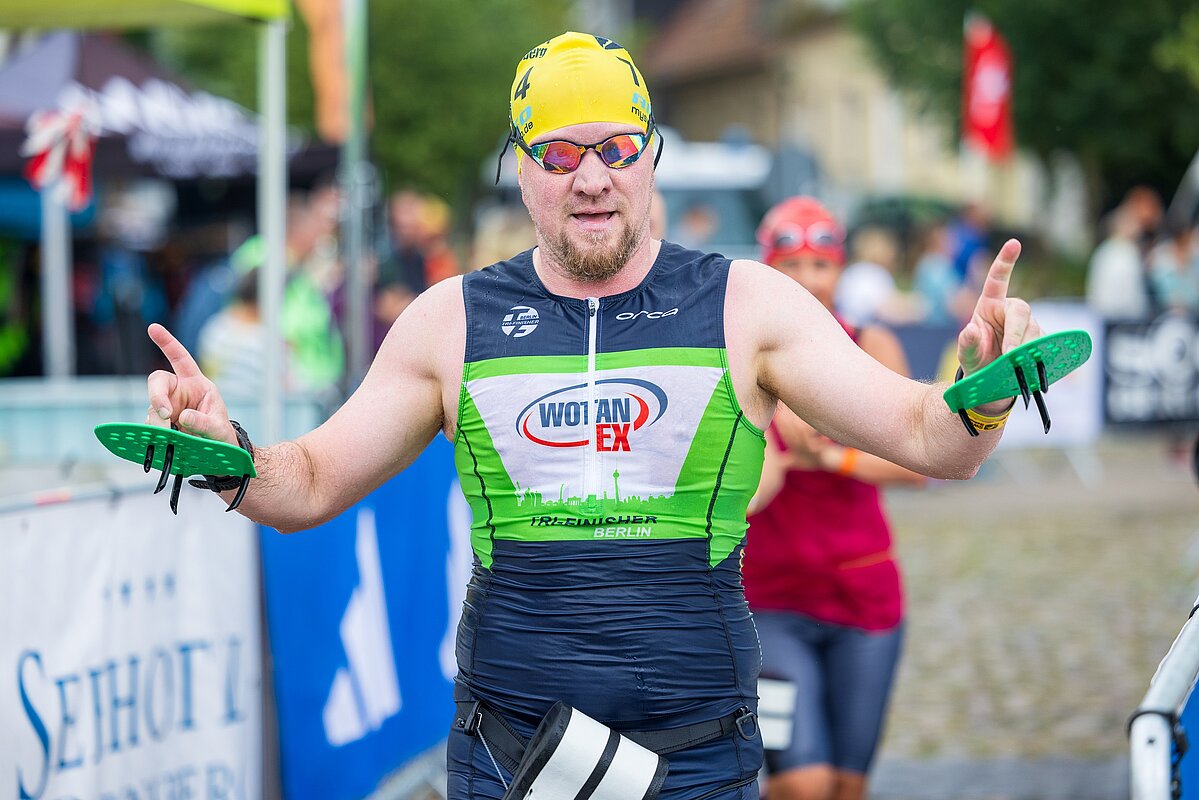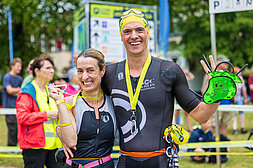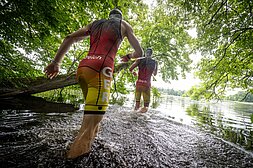The Challenges of the Trend Sport SwimRun
The Seven Challenging Training Aspects of SwimRun
 SwimRun in winter is a special challenge for the mind and body. I @SCC EVENTS_Kreuz&Quer SwimRun e. V.
SwimRun in winter is a special challenge for the mind and body. I @SCC EVENTS_Kreuz&Quer SwimRun e. V.
There are seven aspects that place particular demands on the body in SwimRun. By considering these factors, nothing stands in the way of successful training. The highlight of such a training phase should definitely be participating in a SwimRun event.
1. Thermoregulation
Swimming: Swimming in cold water significantly cools down the body. Heat loss is much greater in water than in air, as water conducts heat away faster. The body must expend energy to maintain core temperature.
Running: Running increases body temperature due to higher metabolic activity and muscle work. The alternating cooling in water and heating while running presents a major challenge for thermoregulation.
2. Muscle Adaptation and Coordination
Different Muscle Groups: Swimming primarily engages the upper body (arms, shoulders, core), whereas running places greater demands on the leg muscles. The body must switch between these different strains.
Coordination Changes: Moving in water (horizontal) and on land (vertical) requires constant adaptation of the musculoskeletal system and neuromuscular control.
3. Cardiovascular System
Circulatory Adaptation: Swimming places the heart in a horizontal position, whereas running requires a vertical body posture. The rapid shift between these positions can affect blood flow and blood pressure.
Heart Rate: The heart rate is often lower in water due to hydrostatic pressure supporting circulation. When running, it increases again due to gravity and greater exertion.
4. Breathing Patterns
Swimming: Breathing during swimming is time-restricted and synchronized with the swim rhythm.
Running: Running allows for freer and often deeper breathing. The transition between these breathing patterns can be exhausting, especially for untrained individuals.
5. Energy Consumption and Nutrient Supply
Varying Energy Demands: Swimming and running rely on different energy systems. Swimming uses more fat as an energy source, while running depends more on carbohydrates.
Energy Intake: Continuous exertion in SwimRun requires regular energy intake, which is essential during long sessions or competitions.
6. Hydrodynamics and Equipment
Equipment: SwimRun athletes often wear wetsuits to maintain body temperature and running shoes, which impact swimming efficiency. The added weight and water resistance increase physical exertion.
Arm and Leg Use in Swimming: Since shoes make the legs heavier in water, a pull buoy is often used to relieve the legs while swimming. Hand paddles are used to enhance arm propulsion.
7. Mental Challenges
The constant alternation between running and swimming, along with environmental factors (cold water, uneven terrain), demands strong mental resilience and focus.
 At the SwimRun Rheinsberg in 2024, both newbies and professionals participated. I @SCC EVENTS_Kettlehut
At the SwimRun Rheinsberg in 2024, both newbies and professionals participated. I @SCC EVENTS_Kettlehut
Preparation and Equipment for Running and Swimming
SwimRun tests the human body in various ways. Successful athletes must master thermoregulation, have a strong cardiovascular system, possess excellent coordination skills, and train their muscles for different movement patterns. Proper preparation and equipment play a crucial role in overcoming these challenges. These demands are what make this sport so exciting, offering the opportunity to continuously improve and push new limits.
Expert Opinion on SwimRun
Sports physician Dr. Margrit Lock from the Sports and Medicine Department at SCC EVENTS evaluates SwimRun as follows:
“From a sports medicine perspective, SwimRun is an ideal way for healthy athletes to enhance their endurance without overloading the body. The pace can be adjusted to individual abilities, the alternation between different sports reduces injury risk, and exercising in nature improves both physical and mental well-being. From a medical standpoint, athletes should ensure they have no significant cardiovascular conditions and are capable of safely swimming in open water. If these conditions are met, there is no medical reason to prevent participation.”
Whether Newbie or Pro: Head to the SwimRun Rheinsberg!
Even beginners can see significant progress in their training within a short time. To assess their level and step into the world of SwimRun, the SwimRun Rheinsberg is highly recommended. It’s a top event for both beginners and professionals in this exciting sport.
More Exciting SwimRun Articles:
The Right Gear for SwimRun
The History of SwimRun
SwimRun: A Sport for All Seasons























